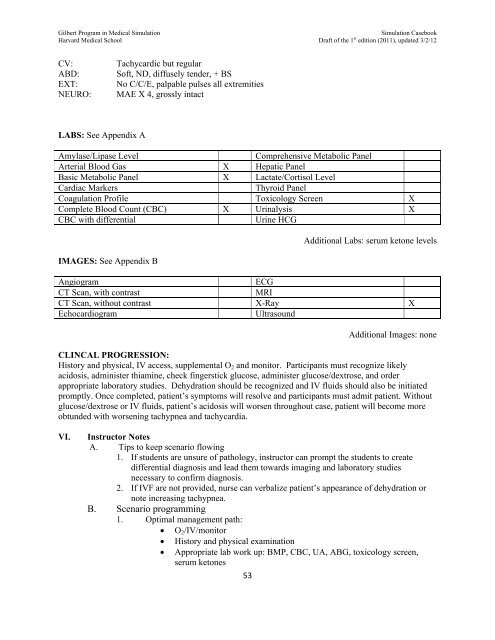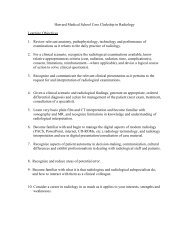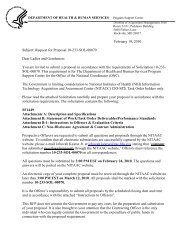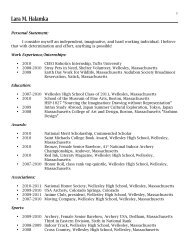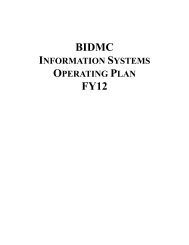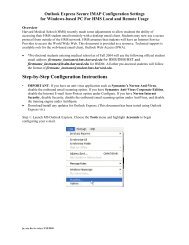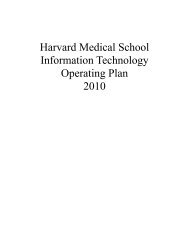SIMULATION CASEBOOK - MyCourses
SIMULATION CASEBOOK - MyCourses
SIMULATION CASEBOOK - MyCourses
Create successful ePaper yourself
Turn your PDF publications into a flip-book with our unique Google optimized e-Paper software.
Gilbert Program in Medical Simulation<br />
Simulation Casebook<br />
Harvard Medical School Draft of the 1 st edition (2011), updated 3/2/12<br />
CV:<br />
ABD:<br />
EXT:<br />
NEURO:<br />
Tachycardic but regular<br />
Soft, ND, diffusely tender, + BS<br />
No C/C/E, palpable pulses all extremities<br />
MAE X 4, grossly intact<br />
LABS: See Appendix A<br />
Amylase/Lipase Level<br />
Comprehensive Metabolic Panel<br />
Arterial Blood Gas X Hepatic Panel<br />
Basic Metabolic Panel X Lactate/Cortisol Level<br />
Cardiac Markers<br />
Thyroid Panel<br />
Coagulation Profile Toxicology Screen X<br />
Complete Blood Count (CBC) X Urinalysis X<br />
CBC with differential<br />
Urine HCG<br />
IMAGES: See Appendix B<br />
Additional Labs: serum ketone levels<br />
Angiogram<br />
ECG<br />
CT Scan, with contrast<br />
MRI<br />
CT Scan, without contrast X-Ray X<br />
Echocardiogram<br />
Ultrasound<br />
Additional Images: none<br />
CLINCAL PROGRESSION:<br />
History and physical, IV access, supplemental O 2 and monitor. Participants must recognize likely<br />
acidosis, administer thiamine, check fingerstick glucose, administer glucose/dextrose, and order<br />
appropriate laboratory studies. Dehydration should be recognized and IV fluids should also be initiated<br />
promptly. Once completed, patient’s symptoms will resolve and participants must admit patient. Without<br />
glucose/dextrose or IV fluids, patient’s acidosis will worsen throughout case, patient will become more<br />
obtunded with worsening tachypnea and tachycardia.<br />
VI.<br />
Instructor Notes<br />
A. Tips to keep scenario flowing<br />
1. If students are unsure of pathology, instructor can prompt the students to create<br />
differential diagnosis and lead them towards imaging and laboratory studies<br />
necessary to confirm diagnosis.<br />
2. If IVF are not provided, nurse can verbalize patient’s appearance of dehydration or<br />
note increasing tachypnea.<br />
B. Scenario programming<br />
1. Optimal management path:<br />
O 2 /IV/monitor<br />
<br />
<br />
History and physical examination<br />
Appropriate lab work up: BMP, CBC, UA, ABG, toxicology screen,<br />
serum ketones<br />
53


